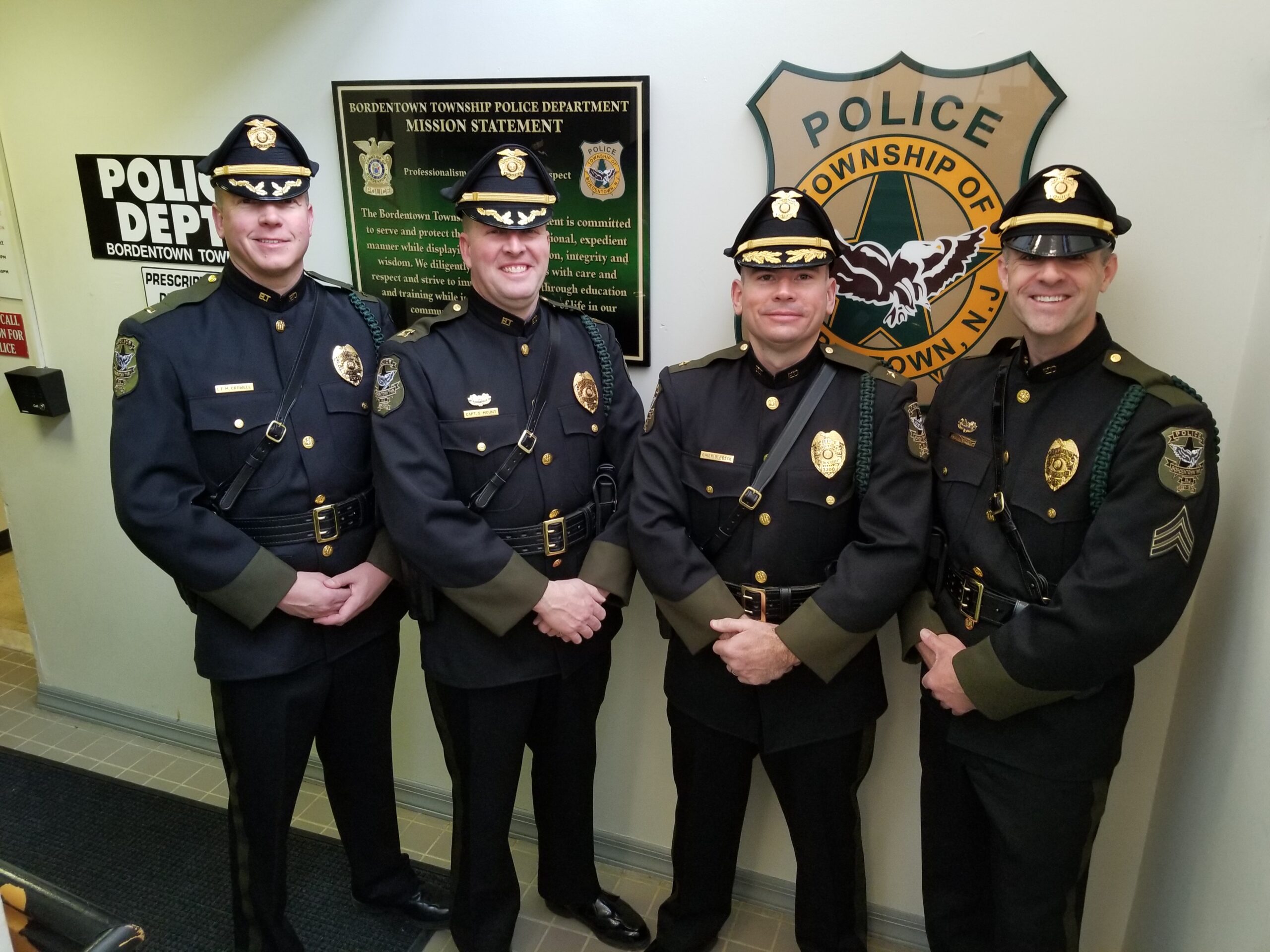The olive green and black uniforms have long been a distinguished look for Bordentown Township police officers, but local residents might notice a fresh, new appearance for the department this year.
As officers of the Bordentown Township Police Department (BTPD) carry out their day-to-day operations and duties this year, they will be sporting brand new uniforms, which police chief Brian Pesce, said will benefit his department in more ways than one.
“Upon taking over as Police Chief in February of 2017 I have enacted numerous changes and reforms at the BTPD,” Pesce said in an email. “Part of this process was to explore ways to upgrade our current uniforms to make them more functional and cost effective to replace. I then created a uniform committee comprised of all sections of the department to research this area and provide me with feedback.
“This was done so that we could make a well-educated decision that would both represent the town in a professional manner and still maintain the unique look of the Bordentown Township Police Department,” he said.
At a township committee meeting on Jan. 28, multiple officers were present to debut their new look as Pesce spoke to the township officials on the significance and importance of the department’s uniform upgrades and enhancements.
While Pesce noted that the department’s recent acquisition and upgrade did come as a big expense, he was happy to point out that 95 percent of the costs pertaining to the new transformation were paid with drug forfeiture funds.
The department will have a “Class A” and “Class B” uniform, which will feature separate, unique designs pertaining to each one to best suit the officer’s role.
According to Pesce, officers will wear the “Class A” uniform for court appearances and special events such as promotions, graduations and funerals, which will utilize a leather belt accompanied by leather equipment holders. Pesce also said that a leather strap dawning across the chest of the uniform has been added too in an effort to, “make a sharp, traditional looking uniform.”
Not only did Pesce want to sharpen the look of his officers, he wanted to address health-related issues with the uniforms as well.
“We decided on using a cotton/wool blend uniform. The natural fibers allow the material to breath and not become stiff. The wool portion of the blend also gives the fabric more durability and holds the color better,” he said. “We also have selected uniforms that have breathable mesh side-panels that allow air flow into the shirts to assist in keeping the officer cool thus preventing heat rash, heat exhaustion and other heat related ailments.”
While the “Class A” uniform is aimed to alleviate the issue of heat exhaustion, Pesce noted that the “Class B” uniform features an outer carrier vest, which is aimed to relieve corresponding lower body pains given the amount of equipment officers carry around their waist.
“By using the chosen outer carrier system, we will be able to place selected items on the outer carrier using a Molle system. This removes stress placed on the lower back and hips by distributing that weight on the outer carrier,” he said. “Since we utilize a 12-hour shift system here and most officers are assigned to the patrol division, this amounts to long periods of time in a seated position in which said equipment digs and rubs at the lower back/spine causing muscle strain, spinal misalignment, and sometimes disc issues.”
Pesce further explained that the improper dispersal of weight from a duty belt can cause an officer’s hips to become stiff and the hip flexors to shorten, increasing the chances for pulled muscles in the upper leg area and lower back when the officer is tasked with exerting force such as running or something as simple as using stairs.
Pesce noted that this increased risk of on-duty injuries can result in greater chances of workman’s compensation claims or affect the officers’ on and off-duty mobility and overall quality of life.
“Unfortunately, we have documented cases at our department of officers with lower back injuries including some medical retirements as a result,” he said.
The carrier vest will feature multiple pouches too in order to accompany the amount of new equipment the department has purchased. Pesce said that new pieces of equipment such as body worn cameras, tasers and tourniquets had “run out of room” on officers’ duty belts to store all of these necessary items in addition to their firearm, radio, magazine pouches, mace/OC spray, baton and handcuffs.
“The additional pouches and pockets of the outer carrier will help store this new equipment while lightening the load of our duty belts,” he said.
Along with the numerous upgrades to the uniforms regarding its refined look and utilization in the field, perhaps its most visual new feature will be its emphasis on the color arrangement. As the officers will be donned in darker attire, Pesce pointed out that the new uniforms will still pay tribute to the department’s past.
“The BTPD has always been unlike others due to its green color,” Pesce said. “We believe that our current choice still demonstrates a unique quality as no other police department in the area has a black uniform.
“We also wanted to pay homage to our heritage so we decided to continue to incorporate our green color. We chose to use an olive drab green stripe on the pants and for our newly designed patches. We also changed the typical yellow thread that most police departments use for lettering and went with gold to stand out amongst other police uniforms,” he added.

